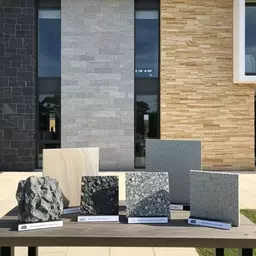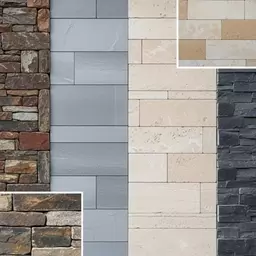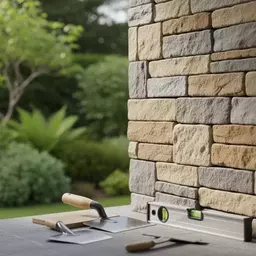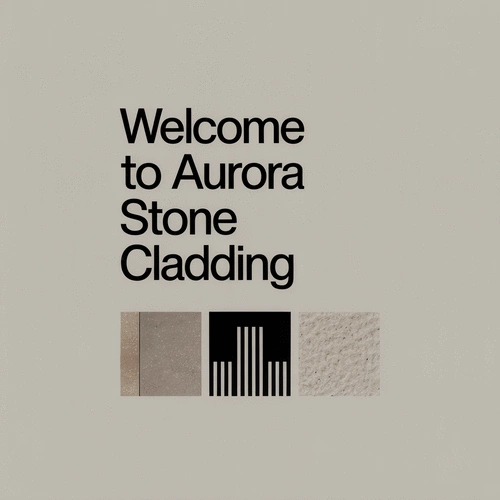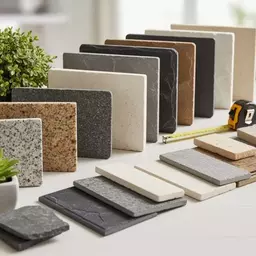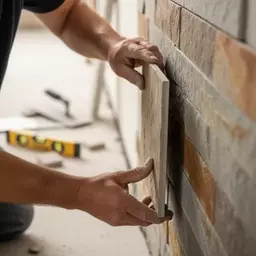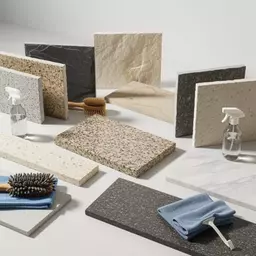Have you ever stood in front of a beautifully clad building, wondering what makes it so captivating? Stone cladding can dramatically enhance the look and durability of your home. In this overview, we uncover the essential aspects of stone cladding installation to help you elevate your architectural designs.
What You Will Learn
- Stone cladding provides aesthetic appeal, durability, and low maintenance, making it a great investment for your home.
- Hiring a professional for installation ensures quality and saves time, as they possess the necessary skills and tools.
- Essential tools for installation include masonry hammers, trowels, chisels, and measuring tools to guarantee precision.
- Safety gear is crucial during installation to protect against dust, sharp edges, and heavy lifting, minimizing potential hazards.
- Understanding cost considerations between renting and buying tools can help you make informed financial decisions for your project.
- Regular maintenance and inspections are vital for prolonging the life and appearance of your stone cladding.
Stone Cladding Project Essentials: Tools & Cost Considerations
This visual outlines the critical tools for stone cladding installation, categorized by type, and offers guidance on cost considerations for tool acquisition. If you're looking for a comprehensive guide to the process, check out our resource on stone cladding installation made simple.
Stone Cladding Installation: Tool Categories
Precision & Accuracy
Basic Hand Tools
- Masonry Hammer
- Trowels
- Chisels
Efficiency & Speed
Power Tools
- Wet Saw
- Diamond Blade Saw
- Angle Grinder
Accurate Placement
Measuring & Leveling
- Measuring Tape
- Level
Personal Well-being
Safety Gear
- Safety Glasses
- Gloves
- Dust Masks
Tool Cost Considerations: Rent vs. Buy
Short-term Savings
When to Rent
- Expensive specialized tools
- Short project timelines
- Unsure of future use
Long-term Investment
When to Buy
- Frequent use expected
- Commonly used tools
- Cost-effective over time
Understanding Stone Cladding Installation: An Overview
When it comes to enhancing the beauty and durability of your home, stone cladding is a remarkable choice. This technique involves applying a layer of natural or engineered stone to a structure's exterior, providing not only aesthetic appeal but also protection against the elements. Have you considered how stone cladding can transform your space? Imagine a stunning façade that captures attention while ensuring long-lasting quality!
At Aurora Stone Cladding, we believe in empowering homeowners, builders, and architects to make informed choices about their projects. By understanding what stone cladding is and why you should use it, you're one step closer to elevating your architectural design.
What Is Stone Cladding and Why Use It?
Stone cladding refers to the practice of installing thin pieces of stone onto a structure to create an attractive, durable surface. Some of the main benefits of using stone cladding include:
- Aesthetic Appeal: Stone adds a natural look that enhances the beauty of any building.
- Durability: Stone is resistant to weathering, making it an excellent long-term investment.
- Low Maintenance: Once installed, stone cladding requires minimal upkeep compared to other siding materials.
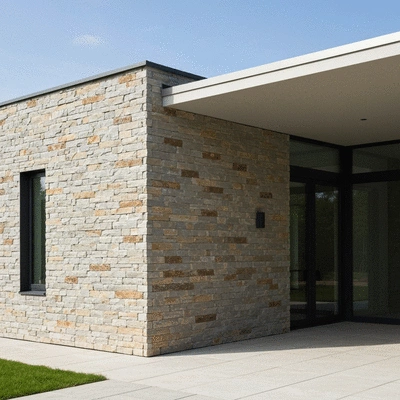
With a wide variety of options available, from rustic natural stone to sleek engineered choices, there’s something for every design preference. It's no wonder more homeowners are turning to stone cladding as a reliable solution for their projects!
The Importance of Professional Installation
While the idea of a DIY stone cladding project might sound appealing, the importance of professional installation cannot be overstated. Achieving the perfect finish requires skill, precision, and knowledge of best practices. Here are a few reasons why you should consider hiring a professional:
- Expertise: Professionals understand the nuances of different stone types, ensuring proper selection and application.
- Quality Installation: They utilize the right techniques and tools to guarantee a sturdy, visually appealing result.
- Time Savings: Experienced installers can complete the project more efficiently, allowing you to enjoy your new space sooner.
At Aurora Stone Cladding, we advocate for quality in every project, and enlisting the help of professionals can help you achieve a flawless finish that stands the test of time! You can also find out more about finding stone cladding installers in Australia through our detailed guide.
Essential Tools for Stone Cladding Installation
Before diving into your stone cladding project, it's crucial to understand the tools needed to ensure a successful installation. Having the right equipment on hand can make all the difference in the outcome of your project. Let's take a closer look at the essential tools you'll need.
Basic Hand Tools for Precision and Accuracy
When it comes to stone cladding, precision is key! Here are some basic hand tools that will help you achieve accuracy:
- Masonry Hammer: Perfect for breaking or shaping stones.
- Trowels: Essential for applying mortar and adhesive.
- Chisels: Useful for fine-tuning stone edges for a perfect fit.
These tools are fundamental in ensuring that each piece of stone is placed accurately and securely, contributing to both the aesthetic and structural integrity of your cladding.
Key Tools: Masonry Hammer, Trowels, and Chisels
The masonry hammer, trowels, and chisels are the cornerstone of your hand tool kit. They enable you to handle stone with care and precision, ensuring that every cut and placement looks perfect. Remember, spending some time familiarizing yourself with these tools will pay off during the installation process!
Measuring and Leveling Tools for Accurate Placement
Accuracy in your measurements is vital for a successful stone cladding installation. Here are a couple of measuring and leveling tools to keep handy:
- Measuring Tape: For precise length and width measurements.
- Level: Ensures that each stone is installed evenly, preventing future issues.
Investing in good-quality measuring and leveling tools will save you time and frustration in the long run!
Power Tools That Make the Job Easier
In addition to hand tools, power tools can significantly speed up the stone cladding installation process. Here are a few essential power tools:
Wet Saw: Choosing the Right Blade for Your Project
A wet saw is invaluable when it comes to cutting stone accurately. It uses water to cool the blade, reducing dust and keeping the material intact. Selecting the right blade is crucial—make sure it’s suitable for the type of stone you’re using!
Diamond Blade Saw: Enhancing Cutting Efficiency
The diamond blade saw is another fantastic option that offers precision cutting. It's perfect for tougher stones and can handle larger pieces with ease. With its efficiency, you'll find the installation process flowing much smoother!
Angle Grinder: Versatile Tool for Stone Cutting
Angle grinders are versatile tools that can be used for various cutting and shaping tasks. With the right diamond blade attachment, they can handle intricate cuts, making them a great addition to your toolkit.
Safety Gear to Protect Yourself During Installation
Safety should always be your top priority when undertaking any installation project. Here are a few essential safety gear recommendations:
- Safety Glasses: Protect your eyes from dust and debris.
- Gloves: Keep your hands safe while handling sharp stones.
- Dust Masks: Prevent inhalation of harmful dust particles during cutting.
Wearing the right safety gear not only protects you but also ensures that you can work confidently and efficiently throughout your project!
Essential Safety Equipment: Glasses, Gloves, and Masks
By investing in quality safety equipment, you can minimize risks associated with stone cladding installation. It’s always better to be safe than sorry!
Understanding the Risks of Stone Cladding Installation
Being aware of the risks involved in the installation process is crucial. Factors such as heavy lifting, sharp edges, and power tools all pose potential hazards. Ensuring you take the necessary precautions will help prevent accidents and injuries!
Protective Gear: Choosing the Right Equipment for Safety
Ultimately, selecting the right protective gear is key to safeguarding yourself. Opt for gear that fits well and provides adequate protection while still allowing you to perform tasks comfortably.
We Want to Hear From You!
What aspect of stone cladding excites you the most? Is it the aesthetic appeal, the durability, or perhaps the low maintenance? Share your thoughts below:
Cost Considerations: Renting vs. Buying Tools
When it comes to your stone cladding project, understanding the cost considerations for tools and materials is crucial. Depending on the scope of your work, you might find yourself debating whether to rent or buy the necessary tools. As someone who has navigated many stone cladding projects myself, I can assure you that making the right choice can save you both money and stress!
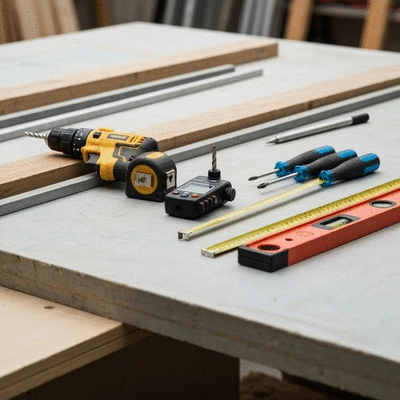
To get started, it’s important to evaluate your budget. Here are some key points to think about:
- Determine the overall budget for your project.
- List all the tools and materials needed for installation.
- Compare rental costs versus purchase prices for each tool.
- Consider how often you’ll use the tools in the future.
Taking the time to assess these factors can lead to more informed decisions and ultimately enhance your stone cladding project. Remember, while renting may save money upfront, purchasing might be more cost-effective in the long run if you plan to undertake multiple projects!
When to Rent Equipment for Your Stone Cladding Project
Renting equipment can be a smart choice under certain circumstances. If you’re just starting out with stone cladding or only have a one-time project, here are some scenarios where renting could be beneficial:
- You need specialized tools that are expensive to buy.
- Your project timeline is short, and you won’t need the tools after completion.
- You’re unsure about which tools to invest in for future projects.
By renting, you can gain access to high-quality tools without the commitment of a full purchase. This flexibility allows you to experiment with different tools during your project without breaking the bank!
Post-Installation Maintenance Tips for Longevity
Now that your stone cladding is beautifully installed, it’s essential to focus on maintenance to keep it looking great for years to come! Regular upkeep is key to preserving the elegance and durability of your stone finish. At Aurora Stone Cladding, we always emphasize the importance of a good maintenance routine.
Here are some practical tips to ensure your stone cladding stays in top shape:
- Regularly clean the surface with a gentle cleanser.
- Inspect for any signs of damage or wear.
- Seal the stone as recommended to protect against moisture.
Taking these steps will not only enhance the appearance of your cladding but also extend its lifespan. If you ever have doubts about the maintenance process, don’t hesitate to reach out or consult the resources available on our website!
Keeping Your Stone Cladding Looking Great
The aesthetics of your stone cladding are as important as its durability. To keep your cladding looking fresh, consider these additional practices:
- Avoid harsh chemicals that could damage the stone.
- Use soft brushes for cleaning to prevent scratching.
- Check for and address mold or mildew promptly.
By implementing these strategies, your stone cladding can truly shine and continue to be a source of pride for your home!
Regular Inspections: What to Look Out For
Regular inspections are essential for maintaining stone cladding. During these checks, keep an eye out for:
- Cracks or chips in the stone.
- Loose panels or shifting pieces.
- Signs of water damage or leaks behind the cladding.
Addressing these issues early can prevent more extensive repairs later on. As an advocate for sustainable building practices, I can’t stress enough how proactive measures can save you time and money! For more detailed advice on upkeep, explore our cleaning guide for stone cladding.
Importance of Sealers and Grout in Maintenance
Lastly, don’t underestimate the role of sealers and grout in the longevity of your stone cladding. Sealers provide a protective barrier against moisture, while grout ensures the integrity of stone joints. Using high-quality products not only enhances the appearance of your cladding but also plays a significant part in its durability.
So, make sure to consult with professionals if you have questions regarding the right sealers and grout for your specific stone type. At Aurora Stone Cladding, we're here to support you every step of the way!
Frequently Asked Questions About Stone Cladding
- What are the main benefits of stone cladding?
- Stone cladding offers significant aesthetic appeal, enhances durability, and requires low maintenance, making it a valuable long-term investment for any property.
- Why is professional installation recommended for stone cladding?
- Professional installation ensures quality results, leverages expert knowledge of stone types and techniques, and saves time, leading to a sturdy and visually appealing finish that lasts.
- What essential tools are needed for stone cladding installation?
- Essential tools include basic hand tools like masonry hammers, trowels, and chisels for precision, as well as power tools such as wet saws and diamond blade saws for efficiency. Measuring and leveling tools are also crucial for accuracy.
- What safety gear is necessary for stone cladding installation?
- Crucial safety gear includes safety glasses to protect against debris, gloves for handling sharp stones, and dust masks to prevent inhalation of harmful particles.
- When should I consider renting tools versus buying them for a stone cladding project?
- Renting is often beneficial for expensive, specialized tools or for one-time projects with short timelines. Buying is more cost-effective for commonly used tools or if you anticipate frequent use across multiple projects, turning them into a long-term investment.
- How should I maintain my stone cladding after installation?
- Regular maintenance involves cleaning the surface with a gentle cleanser, inspecting for any damage or wear, and applying sealers as recommended to protect against moisture. Promptly addressing issues like mold or mildew and avoiding harsh chemicals are also important.
Recap of Key Points
Here is a quick recap of the important points discussed in the article:
- Stone Cladding Benefits: Enhances aesthetic appeal, provides durability, and requires low maintenance.
- Professional Installation: Ensures quality results, saves time, and utilizes expert techniques for best outcomes.
- Essential Tools: Basic hand tools like masonry hammers, trowels, and chisels are crucial for precision; power tools can enhance efficiency.
- Safety Gear: Always wear safety glasses, gloves, and dust masks to protect yourself during installation.
- Maintenance Tips: Regular cleaning, inspections, and sealing are essential for longevity and appearance.
- Cost Considerations: Evaluate your budget and decide whether to rent or buy tools based on your project needs.


